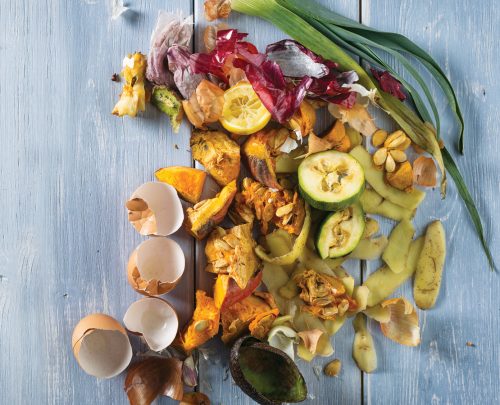
There are easy ways to cut waste and save dollars. Dietitian Melissa Meier shows how.
Would you take $644 out of your bank account and just toss it in the bin? That’s how much the average household throws away in unused food every year. It could be the bag of wilted salad leaves at the bottom of the crisper, the out-of-date, half-used bottle of pasta sauce sitting in the fridge door, or the forgotten container of leftovers hiding on the bottom shelf.
Food waste hits the environment as hard as your wallet. All of the water, energy and fuel that help bring those ingredients into your kitchen can end up going to waste too. And when unused food becomes landfill, it produces methane, a potent greenhouse gas.
So, to help you save money and do your bit for the environment, here are our top 10 tips on how to wage war against waste.
- Haste makes waste
Take stock of what’s in your fridge, freezer and pantry before you visit the supermarket, and write a list so you purchase only what you need. Buy in bulk to reduce packaging, and freeze portions you’re not planning to use soon. - Hey pesto!
Do you buy huge bunches of fresh herbs, only to use a couple of leaves? Say hello to pesto – a flavour saviour that can be made by blitzing herbs such as basil and mint with toasted nuts, olive oil and parmesan. - Top to toe
Think outside the box and use all parts of the vegetable. Blitz the stem of veges such as broccoli and beetroot to bulk up meatballs and pasta sauce, or make a stock for soup with ends of carrot and celery. - In a pickle?
If you’ve got cucumber, carrot or a cauliflower that are looking a little bit limp, pickle them to extend their shelf life. Fruits such as cherries, blueberries and watermelon rind pickle well too. - Lettuce help
Wilting leaves at the bottom of your crisper? Dunk them in a bowl of cold ice water to freshen them up. - Love your freezer
Fresh produce nearing its best-before date, leftovers and raw meat are a perfect match for the freezer. Portion them in reusable containers to thaw later. - Reinvent the wheel
Did you roast too much pumpkin, or maybe boil too many peas? Throw together a simple frittata, or bake a batch of savoury muffins to use up leftover cooked veges. - Compost bin it
If you create a compost bin for non-salvageable food scraps, you’ll end up with soil bursting with nutrients for your garden. Egg shells and tea bags compost well too (just remember to crush the egg shells first). - Tame your sweet tooth
Apples and stone fruit about to go off are perfect for stewing. Take it easy on the added sugar, and pair the stewed fruit with low-fat plain yoghurt for a healthier sweet treat. - Loaf about
Blitz crusts in a food processor and freeze breadcrumbs to use later.
HFG tip
Turn leftover veges into a simple frittata.
Waste not, want not
Storing food correctly can help it last the distance. Here are the best ways to store seven common food items:
- Eggs In their carton in the fridge for up to six weeks
- Bread In the pantry or bread box for two to five days
- Cooked pasta Refrigerated and eaten within three days
- Berries In the crisper for two to four days
- Fresh meat Sealed tight in the bottom of the fridge for three to five days
- Milk In the coldest part of the fridge (not in the door)
- Avocados At room temperature until cut, then place in the fridge with the stone for up to one week.
Know when to throw:
Use-by vs best-before
The use-by date shows when a product must be consumed by. It’s a serious business, as eating something past its use-by date could compromise your health. Eating something after it has passed its best-before date, on the other hand, isn’t necessarily unsafe, but the food may have deteriorated in quality.
Article sources and references
- Choice. How to load your fridge, choice.com.au Accessed January 2019https://www.choice.com.au/home-and-living/kitchen/fridges/articles/loading-a-fridge
- Dietitians Association of Australia. 2019. Food waste – a bigger issue that you’d think, daa.asn.au Accessed January 2019https://daa.asn.au/smart-eating-for-you/smart-eating-fast-facts/food-and-food-products/food-waste-a-bigger-issue-that-youd-think/
- Egg Producers Federation of New Zealand, eggfarmers.org.nz Accessed May 2019https://www.eggfarmers.org.nz/
- Food Standards Australia New Zealand. 2015. Use by and best before dates, foodstandards.gov.auhttp://www.foodstandards.gov.au/consumer/labelling/dates/Pages/default.aspx
- Love Food Hate Waste, lovefoodhatewaste.co.nz Accessed May 2019https://lovefoodhatewaste.co.nz/
www.healthyfood.com










